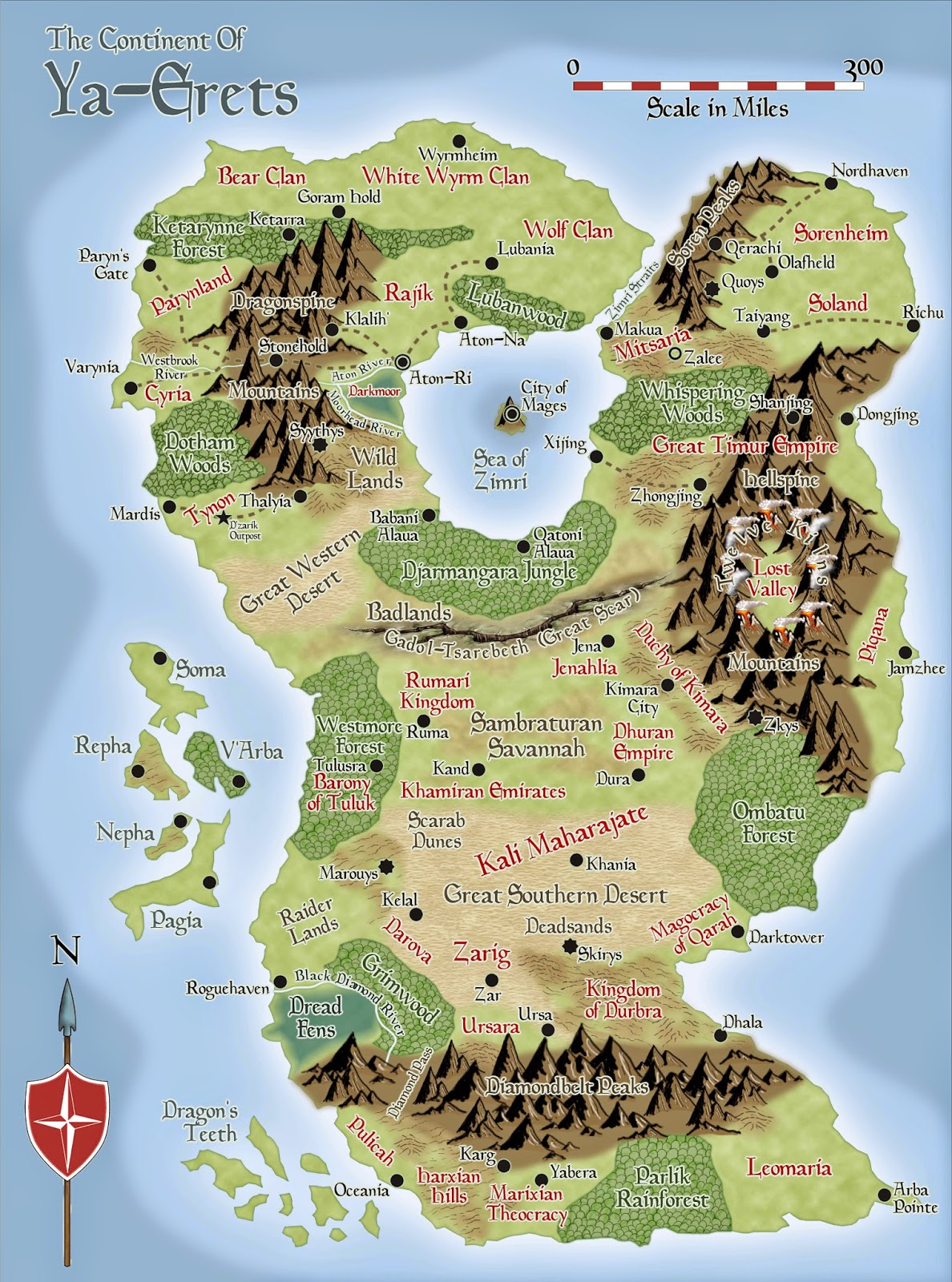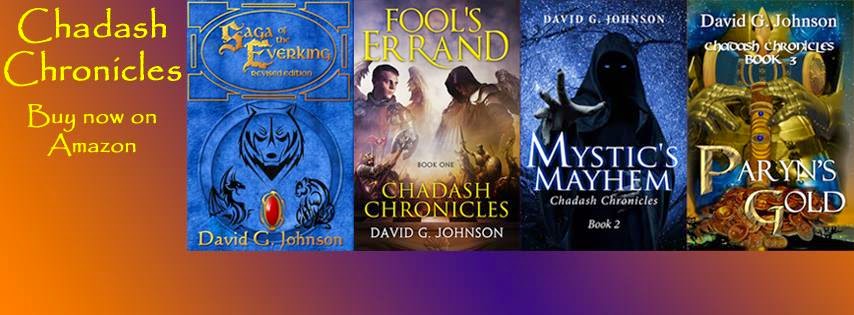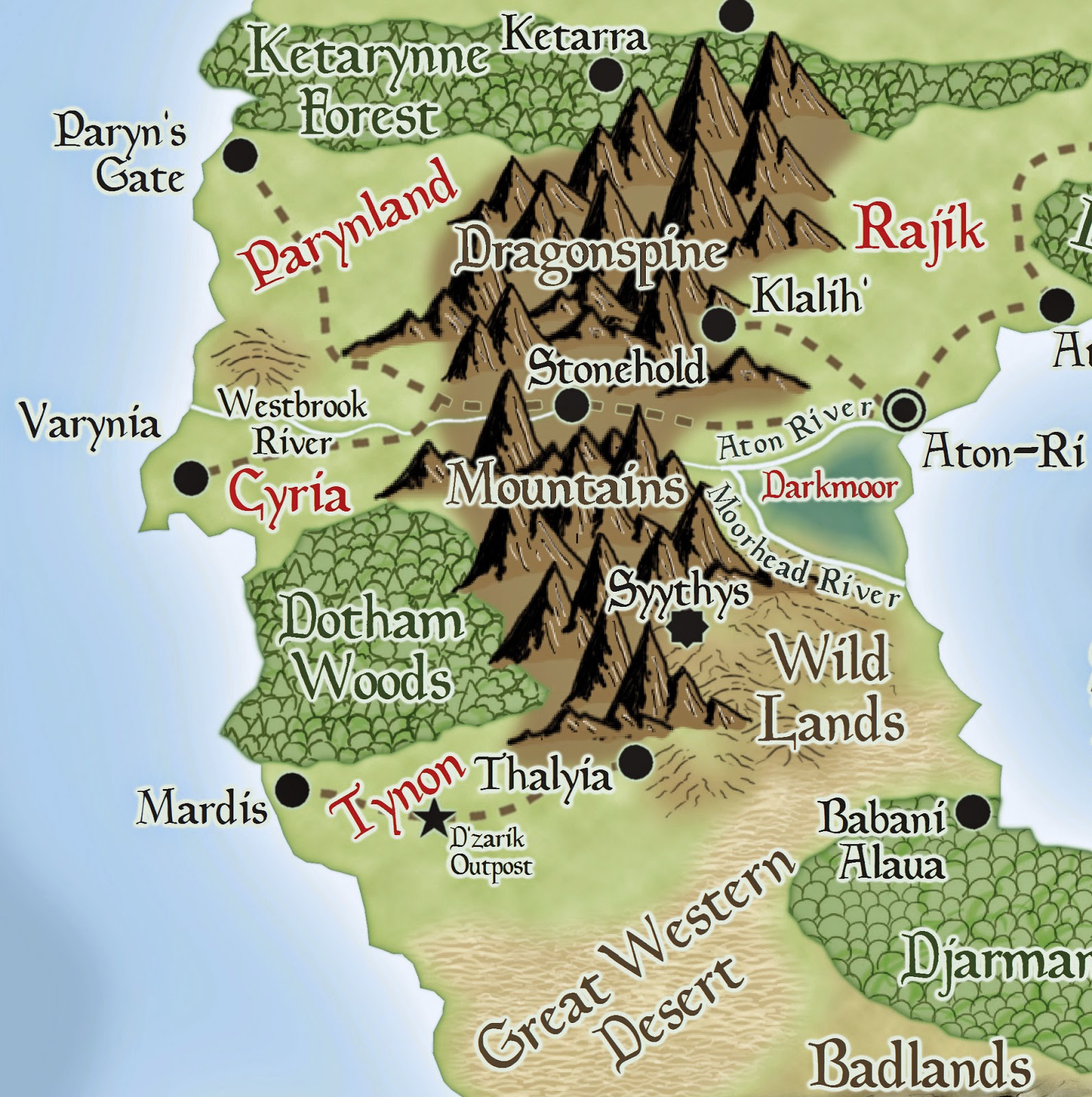On the far side of the universe God has created a new world, the world of Chadash, where two groups of angels battle for the souls of men. Chadash is a world filled with magnificent beings, ancient races, epic heroes, and evil forces seeking to conquer or destroy. An unlikely band of heroes, a teenage thief, a holy warrior, a barbarian prince, a priest, a half-feline huntress, and an outcast necromancer, are drawn together for what was to be a simple job, but soon transforms into a much greater adventure. Come along to the world of Chadash, where heroes strive and battle as unwitting pawns in an even greater struggle.
 Brief description of the world or location you created for this story:
Brief description of the world or location you created for this story: Chadash is a roughly earth-like planet, but is filled with many sentient races. It is a vast land of dangerous creatures, hostile enemies, and exotic landscapes which will capture the imagination of readers and give them a wondrous new world to explore along with the heroes.
Well, Chadash is a vast and varied land, so that question would be a bit like asking what a visit to North America would be like. Canada is very different from Mexico. Maine is vastly different from California. So for the rest of the discussion, let’s focus on the northwest region of the continent of Ya-Erets, where most of the action from the first three books takes place. It is a more civilized and relatively homogenous area of Chadash.
The first of the many must-see highlights for northwest Ya-Erets would be the independent city-state of Aton-Ri. It is truly a melting pot, where races serving the angels serving the One Lord, the Malakim, mix and mingle with the races serving the rebellious and evil angels, the Ayabim. The only rules for residence in Aton-Ri is a willingness to live in peace, and an agreement to fight in defense of the city if needed. No matter how different one is, they can find a home in Aton-Ri.
One of the heroes, Melizar, who has traveled much further than any of the others, refers to the northwest as “a cradle of civility and peace, compared to the rest of the world.” Still, it is not without its dangers. There are the “death grass” adders that inhabit the plains of the northwest, and their bite can kill a full-sized horse with a single bite. The Wild Lands to the south of Darkmoor are filled with Goblinoid tribes and it is an area best avoided if at all possible. Finally, if enjoying the hospitality of the cosmopolitan city of Aton-Ri, the southwest part of the city, especially around the neighborhood known as The Barrows, is best to avoid after dark. Although, if one is an adventurer seeking information, The Iron Cur Tavern, or “Mok’s Place” as the locals call it, sits on the edge of The Barrows and is the place to go in Aton-Ri.
Ah, yes! There is one delicacy that is craved by adventurers and travelers with purses heavy enough to afford it. yochamabread is a specialty made by the Moors of Darkmoor. Being a swamp, food spoils very quickly in Darkmoor and bread cannot be kept for more than a day without going moldy. So the Moors have developed a baking technique using resin from the Yocha tree which grows everywhere in Darkmoor. They oven-seal the bread by baking it in the resin, and as long as the hard, resin shell remains intact, the bread will be just like it was fresh-baked for up to two or three weeks! Eating well on the road is difficult, but for those who can afford it, yochamabread can make the difference between eating and dining on the road.
Well, in earth terms it is a society just on the brink of the gunpowder age. There is one nation of inventors in eastern Ya-Erets, the Duchy of Kimara, whose technological advancements are starting to make their way into other nations. Powder weapons are not uncommon, but they do show up very occasionally in the hands of travelers. Much more common are typical swords, maces, clubs, spears, bows and arrows, crossbows, etc. There are some advanced fighting styles, as various schools of martial monks are known in a few societies. The monks can be very dangerous fighters, but they are not undefeatable and often have their own weaknesses or idiosyncrasies which can be exploited. This, added to the fact that the monks are very few in number compared to the overall population of Ya-Erets, helps keep them from becoming too overwhelming a force. Additionally the often competing philosophies of the different schools mean that opposing monk schools often also serve to keep each other in check.
Again, barring Kimara, which is said to have invented steam powered vehicles, horses and wagons are the normal mode of travel. Some races are very fleet of foot and prefer to run rather than ride. This is seen in the story in the person of Arreya, a half-Zafirr (feline humanoids) huntress and one of the heroes of the first three books. Other races, which aren’t encountered in the first three stories, have wings and can fly. This includes the Ouati, bird-like humanoids, the Zza-zree, bee-like insectoids, and some of the Great Wyrms, like dragons of old. But of course Wyrms have been extinct since CY666, everybody knows that, right? But there are rumors…
What types of plants, animals, or sentient races might we encounter in northwest Ya-Erets that we don’t see on earth?
Chadash is filled with other races, because of the manner and purpose for which it was created. There are so many, but other than the ones I have already mentioned in other answers, and only limiting to the races common to northwest Ya-Erets, there are still quite a few. Goblinoids include races like Orcs, Hobgoblins, and Ogres, and are quite common in the Wild Lands and the Dragonspine Mountains. Giants, called Nephilim, also are found fairly commonly in the Dragonspines. The more dangerous forest of Dotham Woods is home to reptiloids and their ilk, as well as many insectoid races. I have already mentioned the Durgak (think fantasy dwarves) of Stonehold City and the V’rassi (think fantasy elves) of Ketarynne Forest, but there are also the human race of Adami, which are very similar to the humans of earth. The Qarahni, another human race, are large, hearty barbarians who inhabit the Clan Lands of the north. Goldain, one of the main heroes in the story, is a prince of the Wolf Clan Qarahni. Mitsar, or halflings, are also often seen in and about Aton-Ri, although their main homeland is actually in northeast Ya-Erets. Wolf-like humanoids called Fenriri, and their half-human offspring the Fenratu, are very common in the northwest, especially given a large population of them reside in eastern Ketarynne and Lubanwood. That covers most of the races that appear in the first three books, but as Melizar rightly said, there is a vast and wondrous world out there, and other parts of Ya-Erets, which the heroes will visit in future stories, contain many more wondrous races.
The “magic” in all of Chadash is no different than on earth. What? Yes, there is “magic” on earth. We see it throughout the Scriptures. Like in the Bible, there are three kinds of supernatural powers that manifest on Chadash.
Not really. Thatcher, one of the heroes, has a knack for inventing and loves coming up with various gadgets and gizmos. Most of what could be called “technology”, however, would be found in Kimara. There may be a visit to Kimara in later books, but it is not part of the northwest and not really featured in the first three books.
It is very close. There is still a seven day week, but each month on Chadash is 28 days long, so exactly four weeks. There are thirteen months in the year, thus making Chadash’s year one day shorter than ours, i.e. 364 days. There is no leap year on Chadash. The one holiday which plays prominently in the stories is Rest Day, which is the seventh day of every week. It is observed very closely to the way the Sabbath would have been observed in Scripture, but not universally. Most races and nations have wandered far from the teachings of the One Lord, but the V’rassi follow closely the tenets of the Old Testament observances, living quite closely a picture of what Messianic believers would live in today’s world on earth. The Parynlanders, mostly at least partially descended from the V’rassi, tend to hold closer to the observances as well, and Paryn’s Gate is the one city in northwest Ya-Erets that still keeps the tradition of Rest Day.
There are both many, and none. Some societies follow very closely the worship of the One Lord. This is especially true of the servant races of the Malakim, or the angels who serve the One Lord. These servant races are not completely free-willed, but their half-human offspring, should they breed with one of the human races (i.e. Qarahni, Adami, Mitsar, Raphaim, Arba-Zeroa) are. The humans, and half-bloods, being free-willed, often choose their own path. Some do worship the One Lord, while others have chosen to worship the fallen angels, the Ayabim, or some other false gods of Ayabim invention. Many have a general awareness of spirituality on some level, but have no true belief or worship. In many ways, Chadash isn’t that different from earth, is it?
Being a bastion of civilization on the continent, the northwest is a collection of cooperating nations who rule individually in their own area, but who govern the region collectively through the efforts of the Northwest Diplomatic Council, or NDC. The NDC member nations are the independent city-state of Aton-Ri, Rajik, Darkmoor, Parynland, and Cyria. These are human-led nations for the most part. Stonehold hosts the NDC and if necessary the Durgak agree to serve as mediators for disputes, given their neutrality to the external politics of the other nations. It seems to work well for the most part, and the NDC has managed to be the chosen way to settle international disputes for nearly three decades. The NDC was formed after the end of the Parynland-Cyria war.
Yes, actually. I live internationally now, and have been a minister and visitor to many nations in North America, Europe, Africa and Asia during my lifetime. I love the vastly different cultures, customs, foods, etc I have encountered in my travels, so in my books I felt it was important to create a deep and realistic world where readers could travel with the heroes and get to experience some of the wonders of different places and different people. Also I have a master’s degree in Biblical Languages, so I really enjoyed incorporating Hebrew into the V’rassi culture as their racial language. It gives an ancient feel to Chadash, and a three-dimensional aspect to some of the terms that have crept into other languages and cultures throughout Ya-Erets. That love of history, and fascination with how current events have developed from historical ones, is a key factor in my worldbuilding, so when readers get my books, they get a world that feels real despite the wildly fantastical elements I incorporate. Readers of epic fantasy should get an epic world. If I fail to do that, I feel I have short-changed my readers.
Well, the faith element in my book is present, but not smothering. It occurs naturally within the story and characters. Some will dislike the book because it is written from a Christian worldview, regardless of how skillfully or subtly the faith elements are presented. Other unbelievers have said in reviews, they appreciated that I was up front in the Foreword that it was written from a Christian worldview, but that engaging with the faith elements was not necessary in order to enjoy the story.
Author autobiography:
I worked for many years as a senior manager for various Information Technology companies. Late in life, I came to faith in Christ, and that turned my life in a whole new direction. I knew from day one that I intended to serve him, but had no idea what that meant. The wonderful pastor who led me to Christ encouraged me to enroll in Seminary, so I came to Christ in August and was in Seminary by the following May. Years later I have completed my MDiv in Biblical Languages with a concentration in International Church Planting, and we currently live in Asia serving as living witnesses to our faith. Writing is another love I have had for my whole life, especially of Fantasy and Science-Fiction, and God has given me a way to expand my ministry with the gift of writing.
The books can be found on Amazon. For those wishing to save 99 cents, you can actually get a free copy of the short-story teaser/intro to Chadash, Saga of the Everking, from Smashwords or B&N.com for the Nook. If you are a kindle reader, you can get the mobi file from Smashwords or just get it for 99 cents on Amazon directly.
Saga of the Everking (free edition on Smashwords)
There are a number of places.
On Twitter: https://twitter.com/RvDavidGJohnsonor just @RvDavidGJohnson
Click here to read other posts in the Realm Explorers series.
Please join us again next Monday for a trip to the Circeae System in Realm Explorers Part XIV!



5 Replies to “Realm Explorers Part XIII: Visit Chadash with David G. Johnson”
This is just a wonderful insight into the world of Chadash. Having read Johnson's books and reviewed them, I feel this post needs to be included in Book3 or in any future editions of the entire series and future trilogies. Definitely either this post needs to be included in the website for the Chadash Chronicles or Johnson's website or at least a link to this blog post. This post is a great introduction to this trilogy and I learnt things I did not know or pick up from reading the fist two books. Extremely well done! If I had printed copies of The Chadash Chronicles, I would print this out and leave it in the books for reference.
Great interview, David! I'm wondering…can the yochama resin shells (from around the bread) be retrieved/saved and reused and resealed by people who can't afford the original, specially baked yochama bread? Just wondering… 😉
Krysti,Great question. Unfortunately not. I actually got the idea for the yochama bread from something Cracker Barrel used to serve years ago, called resin baked potatoes. They would coat the potato in resin and drop it into a deep fryer. Once you broke the hard shell, the potato inside was flaky and amazing. Not sure why they stopped making those, but it was a sad day.Anyway, the resin shell is put on as sort of a soft, sap-like substance, but once baked it becomes a hard, sealed shell. In order to get to the bread, you have to break the shell. Since the heat of the ovens has already altered the physical properties, the shell is not reusable once broken open.Of course, if someone really were desperate, though could travel to Darkmoor and buy them there much cheaper. It is the ones available conveniently in other cities that are really pricey. In Darkmoor it is easy to get it affordably. Kind of like buying bananas in Central America or Mangoes in East Asia. At the source, they are cheaper.Thanks for the question and taking the time to read. Hope you enjoy the books.
Peter, print copies are available from Amazon, but not sure how the shipping to Australia goes. I think they should be up on Amazon.au now, the publisher was supposed to get that fixed in the distribution.As for the inclusion, I would have to talk to Annie about her permission to include this maybe as an appendix in Paryn's Gold. There is still time…due out in November.Thanks again for your readership and kind reviews of the books, Peter. I hope Paryn's Gold will live up to your expectations. I truly believe it is the best one yet!
Wow! That was such a detailed interview – I already feel a little invested in this world! There were so many interesting tidbits there like the bit about the bread and the repentant fallen angels. Fascinating! Thanks so much for sharing this at Booknificent Thursday! Hope to see you again next week.Tina